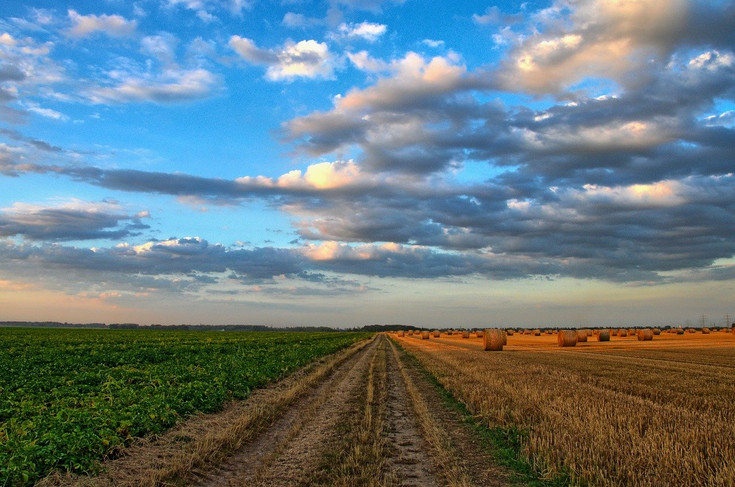08.02.2022 - International research team with BOKU participation examines global land use and identifies opportunities for a more sustainable and equitable approach

© pixabay
In a new study, land-use scientists urge policymakers to adopt new approaches to address climate change, biodiversity and other global crises.
The new report, published today in the Proceedings of the National Academy of Sciences of the United States of America (PNAS), is a call to action. "Ten Facts about Land Systems for Sustainability" was written by 50 leading land use scientists from 20 countries and provides concrete examples to help policymakers and the public understand what is at stake in current, global development.
"Global agreements on climate change, biodiversity and development increasingly focus on land management as a solution to a long list of challenges," said Ariane de Bremond, executive director of the Global Land Programme, which invited the authors to write the study.
"Soil is at the heart of the interactions between nature and society. It is affected by - and drives - environmental change. Soil can be part of sustainable solutions, but this potential is very limited by the many functions that land ecosystems perform," emphasizes co-author Karlheinz Erb of the Institute for Social Ecology at the University of Natural Resources and Life Sciences, Vienna. "Roads and settlements cover only a relatively small part of the land area, but their impacts are far-reaching," adds co-author Helmut Haberl, also from the Institute of Social Ecology (BOKU).
The ten facts described in the study focus on people's relationship to the land itself on a physical level, as well as the social, economic, cultural, environmental and spiritual impacts of how land use decisions are made and by whom.
The ten facts identified collectively by the study's co-authors are:
- The meaning and values of land are socially constructed and contested. Different groups place different values on what makes land useful or culturally important, and when land is considered degraded. Top-down policies are often rooted in a dominant value system.
- Land use systems are complex and often exhibit abrupt changes that are difficult to predict. Policies are usually intended to solve a specific problem, but often fail because they ignore the complexity of the systems. Addressing a problem in isolation can lead to unintended harm to nature and people.
- Irreversible change and path dependencies are common features of land use systems. Changing from one land use to another, such as clearing old-growth forests, results in changes that are felt decades to centuries later. Restoration rarely returns land to a condition that truly reflects its original conditions.
- Some land uses have small footprints but very large impacts. Cities, for example, consume large amounts of resources that are often produced elsewhere on vast tracts of land. However, cities can also reduce negative impacts by concentrating population in a relatively small area. Net impacts are often difficult to measure and predict.
- Drivers and impacts of land use change are globally interconnected and affect distant locations. Because of globalization, land use by people living far away, economic factors, policies, organizations, and decisions can affect land use in another place.
- We live on an intensively used planet where all land is of use to societies. Humans directly inhabit, use, or farm more than three-quarters of the Earth's ice-free land. Even uninhabited land is connected to people in different ways; nowhere is a change in land use free of trade-offs.
- Land use changes usually involve trade-offs between different benefits. "Win-win" situations are rare. Land use provides a number of benefits, such as food, timber, and sacred areas. But it also often comes with trade-offs for nature and some local communities. Land use decisions involve value judgments that determine which benefits should be prioritized and for whom.
- Land tenure and land use claims are often unclear, overlapping, and contested. Use and access rights to land may overlap, belong to different people, or refer to different types of access, as with property or use rights.
- Benefits and burdens of land are unequally distributed. In most countries of the world, a small number of people own a disproportionate share of land area and land value.
- Land users have multiple, sometimes conflicting, ideas about what social and environmental justice means. There is no single form of equity that is equally fair to all. Equity means different things to different people. These range from recognizing indigenous groups' claims to land, to the impacts on future generations, to the systems used to determine whose claims take precedence. These facts affect the effectiveness and social and environmental impacts of policies and decisions that affect land, from climate change mitigation and adaptation to food availability, biodiversity, and human health.
These facts influence the effectiveness and social and environmental impacts of policies and decisions affecting land, from climate change mitigation and adaptation to food availability, biodiversity, and human health.
The authors encourage policymakers to recognize that trade-offs are much more common than win-win solutions. Policies that explicitly recognize this dynamic and the importance of constant reassessment are likely to lead to more equitable outcomes.
Land use governance can be improved by recognizing ambiguous and overlapping claims to land rights and tenure and developing systems that take into account the rights and perspectives of marginalized groups.
"It is time to move beyond the pursuit of 'sustainable land use' and instead think about how to achieve 'sustainability through land use,'" concluded Patrick Meyfroidt, the study's lead author and a professor at UCLouvain in Belgium. "We hope these facts and their implications can provide a more solid foundation for much-needed conversations about land use and sustainability in global policy development."
Link to the study: https://www.pnas.org/content/119/7/e2109217118
For more information, visit http://glp.earth
Contact:
Univ.Prof. Dr. Helmut Haberl
Universität für Bodenkultur Wien
Institut für Soziale Ökologie
Email: helmut.haberl(at)boku.ac.at
Telefon: +43-699-19130591
